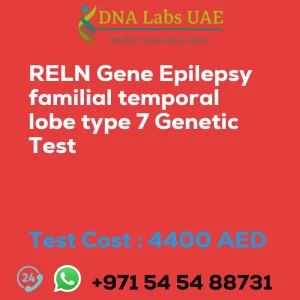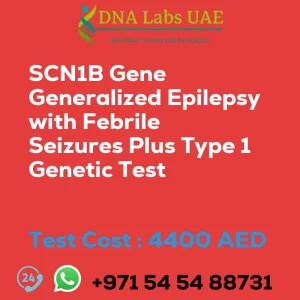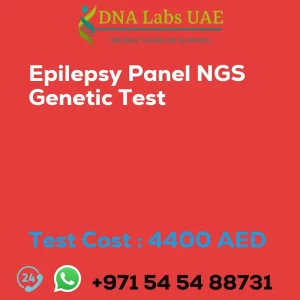HOXB1 Gene Facial Paresis Type 3 Genetic Test
Test Name: HOXB1 Gene Facial Paresis Type 3 Genetic Test
Components: Blood or Extracted DNA or One drop Blood on FTA Card
Price: 4400.0 AED
Sample Condition: Blood or Extracted DNA or One drop Blood on FTA Card
Report Delivery: 3 to 4 Weeks
Method: NGS Technology
Test Type: Neurological Disorders
Doctor: Neurologist
Test Department: Genetics
Pre Test Information: Clinical History of Patient who is going for HOXB1 Gene Facial Paresis Type 3 NGS Genetic DNA Test. A Genetic Counselling session to draw a pedigree chart of family members affected with HOXB1 Gene Facial Paresis Type 3.
Test Details:
The HOXB1 gene is associated with facial paresis type 3, which is a condition characterized by weakness or paralysis of the facial muscles. This condition can affect facial expressions, speech, and eating.
NGS (next-generation sequencing) genetic testing can be used to identify mutations in the HOXB1 gene that may be causing facial paresis type 3. This type of testing can analyze multiple genes at once, providing a comprehensive view of an individual’s genetic makeup and potential risk for inherited conditions.
If a mutation is identified in the HOXB1 gene, genetic counseling and management strategies can be recommended to help manage symptoms and prevent complications.
| Test Name | HOXB1 Gene Facial paresis type 3 Genetic Test |
|---|---|
| Components | |
| Price | 4400.0 AED |
| Sample Condition | Blood or Extracted DNA or One drop Blood on FTA Card o |
| Report Delivery | 3 to 4 Weeks |
| Method | NGS Technology |
| Test type | Neurological Disorders |
| Doctor | Neurologist |
| Test Department: | Genetics |
| Pre Test Information | Clinical History of Patient who is going for HOXB1 Gene Facial paresis type 3 NGS Genetic DNA Test A Genetic Counselling session to draw a pedigree chart of family members affected with HOXB1 Gene Facial paresis type 3 |
| Test Details |
The HOXB1 gene is associated with facial paresis type 3, which is a condition characterized by weakness or paralysis of the facial muscles. This condition can affect facial expressions, speech, and eating. NGS (next-generation sequencing) genetic testing can be used to identify mutations in the HOXB1 gene that may be causing facial paresis type 3. This type of testing can analyze multiple genes at once, providing a comprehensive view of an individual’s genetic makeup and potential risk for inherited conditions. If a mutation is identified in the HOXB1 gene, genetic counseling and management strategies can be recommended to help manage symptoms and prevent complications. |








